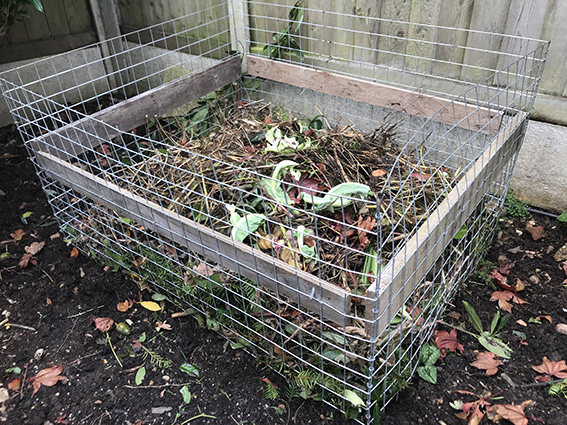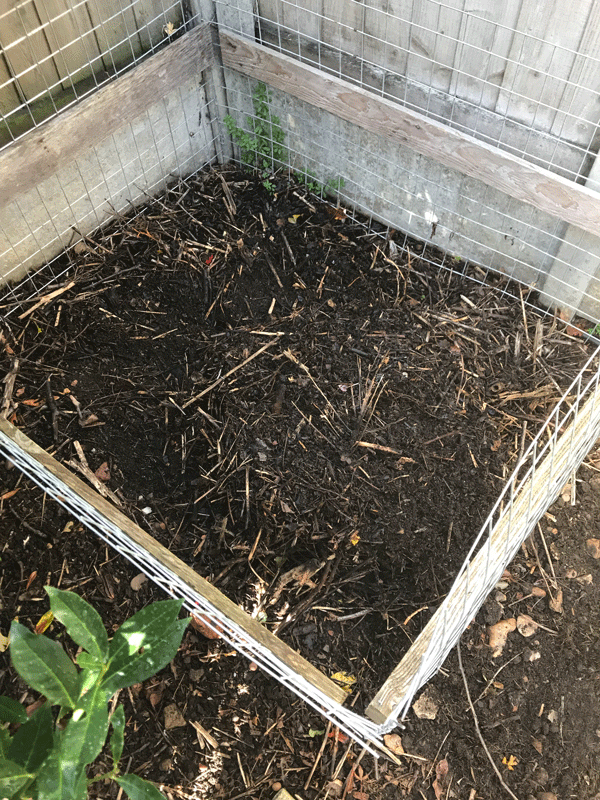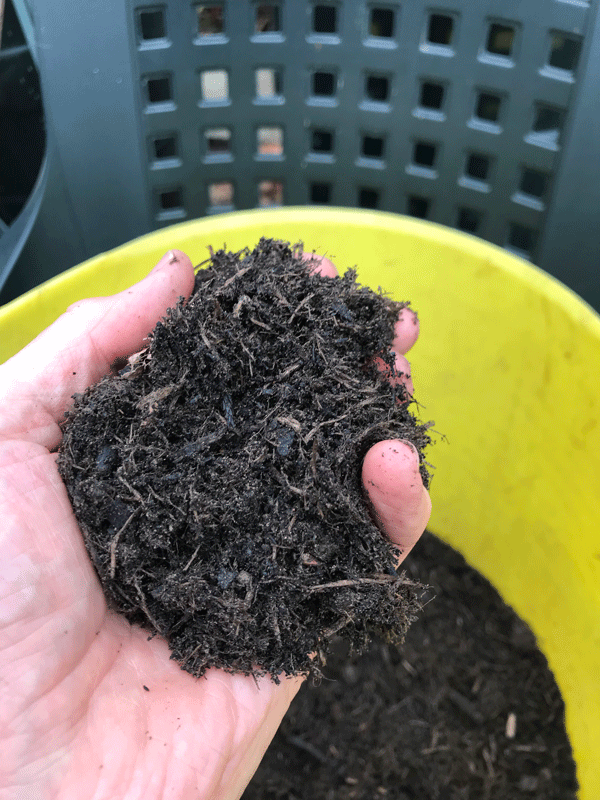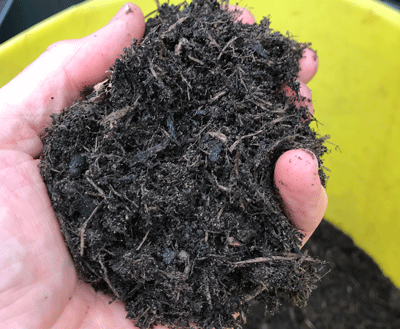Composting in smaller suburban Gardens 'Final update'.
Last year I wrote a blog on my first foray into composting in a small suburban garden in Essex. My blog was brought about due to me fortuitously being left with a palette wire cage I had left over from a Garden Design commission and my local council changing their rules on green waste collections. Anyway, the full story is in the two previous blogs (links shown at the bottom of this blog). It's now almost a year since the first blog and I thought I would give a final update on how the process of composting using the method I previously described worked.
Before I first started, I carried out some research into composting and chose to follow the idea of a 50/50 split of Nitrogen and Carbon. Heaven knows what the final balance happened to be as who can be that specific, but it appeared to look like a ‘healthy' mixture of the two elements. Crucially, I refrained from adding too many grass clippings to avoid ending up with, what I had read could be, a sludgy, smelly mess. So, what I started off with is shown right. At the time, not terribly inspiring but I continued to add material until the cage was full.

There were also varying ideas on how often the heap was turned but I guess I turned it 4 or 5 times throughout the year. I also watered it during the scorching summer heat when I remembered to in order to maintain moisture levels. It could be argued that, due to Garden design commitments and my own general gardening demands throughout the year, my management of the compost heap wasn't particularly rigid.

However, I decided to check in on its progress about two weeks ago as I hadn't really examined it recently and somewhat to my astonishment I could see that the vegetation had significantly broken down and I had what could be described as a pile of crumbly soil like material.
I have to confess that the original volume of vegetation (roughly 1 cubic meter) had broken down into quite a small pile of compost. Nonetheless, whilst containing my excitement scooped the material into a large yellow 'trug' and then gradually passed the material through a sieve to take out any larger stubborn twig like material, which was still to decompose.
Now I don't want to turn into a compost ‘Nerd' or promote any level of expertise in the field of compost creation but what I was left with was a beautifully crumbly, earthy scented, mass of organic material which I would happily describe as ‘Monty Don' grade compost. The fact that from the original cubic metre of garden waste material, I was left with around 40 to 50 litres of compost, still supports the argument that buying compost by the cubic metre is a much more effective way obtaining the level of material I put on my garden each year. But in accepting that argument, I still have to say (in a non ‘Nerdy' way if that is at all feasible) that I was pretty ‘chuffed' with the outcome.

So, whilst I still champion the purchase of compost where large amounts are needed, if you have the spare space, composting in your own garden is worthwhile as long as you accept the somewhat meagre level of final material.
I'm also happy to say that the material has now been put to good use in potting up cuttings and some newly acquired plug plants for next year and with the compost space now empty, the whole process starts over again but this time, with more confidence in hand, I hope to make the heap a little bit bigger.
See how composting all started for me..
https://www.gardencreationbygarycurtis.co.uk/gardening-blog/composting
https://www.gardencreationbygarycurtis.co.uk/gardening-blog/compost-january-update

